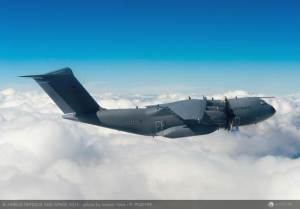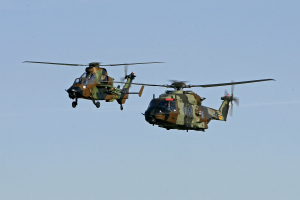Tráfico de pasajeros en Chile crecería en 2014 a una cifra menor a la esperada
December 29, 2014
Producto del menor dinamismo que ha seguido experimentando la economía chilena en los últimos meses y a la postergación de algunos proyectos mineros, lo que ha incidido en los vuelos dentro del país, este año, al decir de los expertos, terminaría con un crecimiento de solo un 5% en el transporte de pasajeros por vía aérea.
Cifra que no se condice con aquellas de dos dígitos a las cuales el país ya se había acostumbrado y que han motivado enormes inversiones en el desarrollo de una nueva infraestructura aeroportuaria, la que podría llegar a quedar subutilizada de mantenerse la cifra ya señalada.
Cambio de mando en la DGAC de Chile
December 29, 2014
En ceremonia realizada en la Dirección General de Aeronáutica Civil y ante la presencia del Comandante en Jefe de la Fuerza Aérea de Chile, General del Aire Jorge Robles Mella, el General de Brigada Aérea (A) Rolando Mercado Zamora, quien se acogió a retiro de la institución, hizo entrega del puesto de Director General de Aeronáutica Civil al General de Aviación Maximiliano Larraechea Loeser.
New Mi-171Sh helicopters praised by Peru’s leadership
December 29, 2014
Moscow / 25 December 2014
In November and December this year, Russian Helicopters (part of State Corporation Rostec) delivered eight new Mi-171Sh military transport helicopters to Peru’s Ministry of Defence as contracted. The helicopters were well received by Peru’s leadership.
The ceremony marking the new Mi-171Sh helicopters’ acceptance into service with Peru’s Air Force was attended by President of Peru Ollanta Humala Tasso, the country’s Minister of Defence Pedro Cateriano Bellido, and other leading officials. During his speech at the Air Force base in Callao, Peru’s president noted that, thanks to this delivery, Peru is the third leading power in Latin America in terms of the number of transport helicopters.
Peru’s Defence Minister Pedro Cateriano Bellido said that expanding the fleet with Russian helicopters will make it possible to renew the Air Force’s operational capabilities, and retool remote bases and border observation posts. Group Commander Omar Gonzales stressed that the Mi-171Sh’s advantages include its powerful engines that can operate at great altitudes, including in the Andes.
The new Mi-171Sh helicopters performed a demonstration flight during the ceremony. The President of Peru went up in one of them, and completed a 30 minute flight, after which he praised the helicopter for it is ease of navigation and high flight capabilities. Peru’s Ministry of Defence praised the quality of the helicopters’ construction and wide range of additional equipment.
Thanks to the Mi-171Sh helicopters, it will be possible to deliver aid to remote provinces along the Amazon River basin and in the highlands of the Andes, and they will also prove useful in military operations along the Apurimac, Ene and Mantaro rivers as part of counter-narcotics and counter-terrorism operations and missions targeting groups involved in illegal mining.
Mi-171Sh helicopters are made by Ulan-Ude Aviation Plant, which is part of Russian Helicopters. Peruvian specialists were trained in 2014 at the plant’s Aviation Training Centre. They used the latest Mi-171 training suite and latest training techniques to learn how to pilot the helicopters in a range of different weather conditions, and engineering specialists were trained in helicopter maintenance.
The contract to deliver 24 helicopters to Peru was signed in December 2013, by Russia’s military goods exporter Rosoboronexport. Under it, 24 helicopters are to be delivered to Peru, with two batches of four helicopter delivered in 2014, and the rest to follow in 2015. A maintenance centre for Russian helicopters will also be established in Peru. The first batch of Mi-171Sh helicopters was delivered a month ahead of schedule. The delivery included supplies intended to support their use.
GULFSTREAM OFFERS ADS-B OUT FOR G150 AIRCRAFT
December 23, 2014
Technology Provides Safety And Operational Benefits For Operators, Air Traffic Control
SAVANNAH, Georgia, December 23, 2014 — Gulfstream Aerospace Corp. announced today that it has received approval from the U.S. Federal Aviation Administration to install avionics known as Automatic Dependent Surveillance-Broadcast Out (ADS-B Out) on G150 aircraft. The new ground-based surveillance technology, which has safety and operational benefits, is required to operate aircraft in portions of airspace above Australia, Canada, Hong Kong, Singapore, Taiwan and Vietnam. ADS-B Out will be required to fly in U.S. and European airspace by January and June 2020, respectively.
“We are glad to announce that this enhancement will be available to G150 operators in January,” said Mark Burns, president, Gulfstream Product Support. “ADS-B Out is an important part of the solution to meet the demands of air traffic growth in the coming years. It will help ensure customers meet current and future aviation mandates and help improve the efficiency of air traffic control systems.”
ADS-B Out will supplement and/or replace ground-based radar systems. Using ground-based transceivers, an ADS-B Out system generates aircraft position information with greater accuracy and reliability. Benefits for operators and air traffic control include:
• Improved position accuracy for air traffic control for all flight segments: surface, terminal area and en-route operations
• Closely spaced parallel approaches
• Reduced spacing on final approach
• Improved air traffic control services in non-radar airspace
ADS-B Out installation for the G150 will include replacement of the aircraft’s existing transponders with DO-260B-compliant units, which will be required for U.S. and European airspace, and the installation of a universal access transceiver and three antennas. The new equipment is manufactured by Garmin International of Olathe, Kansas.
Initial installations of ADS-B Out on G150s will be done at Gulfstream’s Dallas facility. ADS-B Out is available for all other in-production Gulfstream aircraft — G650, G550, G450, G280 — and several out-of-production aircraft — GV, GIV, GIV-SP, G400. It will be available for the G200 in 2015. For more information, contact a Gulfstream Product Support regional sales manager.
Gulf Coast Avionics completes Panamanian Bell 412EP upgrade
December 23, 2014
GULF COAST AVIONICS ANNOUNCES THE COMPLETION OF AN
ALL-DIGITAL PANEL UPGRADE ON A PANAMANIAN SERVICIO NACIONAL AERONAVAL BELL 412EP HELICOPTER
The total digital panel transformation included dual Garmin G500H EFDs, Garmin touchscreen GTN 650Hs and Electronics International electronic engine display systems.
Lakeland, FL, December 23, 2014 — Rick Garcia, President and CEO, Gulf Coast Avionics announced that the company recently completed a full digital upgrade on a Bell 412EP helicopter operated by the Panamanian Servicio Nacional Aeronaval.
“When this 412 arrived in our shop last August it looked every bit like a helicopter that had worked long and hard. As you can imagine, its original analog avionics and instruments were becoming unreliable and difficult to repair,” Garcia said. “The state-of-the-art digital avionics package including Garmin Helicopter Synthetic Vision (HSVT) gives Panamanian Public Forces pilots the highest levels of system reliability, safety and situational awareness.”
Andy Smith, GCA’s Installation Sales Representative explained that the project began with the removal of all of the helicopter’s original analog avionics, mechanical flight and engine instruments, wiring harnesses, and mounting hardware.
“To accommodate the new Garmin EFDs, GTN radios and Electronics International digital engine displays we had to design and fabricate a new, custom metal instrument panel and center pedestal for the 412,” he said. “We also had to build-up new wiring harnesses that would integrate all the new digital avionics with the original autopilot, weather radar and other instruments that were staying in the aircraft.”
“One of the major challenges with this upgrade was integrating the analog units the operator wanted to keep in the aircraft. It took a lot of effort and planning to get the autopilot, radar, engine instruments, TCAS and other systems to work seamlessly with the new digital displays,” Smith said. “We couldn’t have done it all without a tremendous amount of help from the support teams at Garmin and Electronics International. Their cooperation was invaluable.”
Smith explained that the upgraded Bell 412EP panel now features:
• Dual Garmin G500H dual-screen electronic flight displays with HSVT
• Dual Garmin GTN 650H touchscreen GPS/NAV/COMs
• Dual Garmin GTX 33 remote Mode S transponders
• Garmin GMA 340 digital audio panel
• Electronics International MVP-50T-B412 digital engine monitoring system
• L3 Communications Trilogy Electronic Standby Instrument
• Digital interface to existing Sperry SPZ-7600 autopilot
• Digital interface to existing BendixKing RDR 2000 radar
• Digital interface to existing Avidyne TAS 605 traffic system
• Custom designed and fabricated instrument panel and center pedestal.
• All-new, custom wiring harnesses.
“I know the Panamanian National Aeronaval Service is extremely happy with their ‘new’ Bell 412EP. And, while I am exceedingly proud of the panel itself, I am even more pleased by the outstanding work and dedication that the Gulf Coast team put into this project,” Garcia said. “Like any major panel upgrade, this one took a great deal of coordination and cooperation from everyone in purchasing, engineering, and installation. This was a great team effort.”
Air Europa dejaría de operar a Chile
December 22, 2014
Debido a la baja de aviones disponibles, Air Europa dejaría de operar a Chile a contar de marzo de 2015.
La empresa que cubre la ruta Madrid- Santiago-Madrid, con escala en Salvador de Bahía, ya en julio del presente año, por similar razón había reducido sus vuelos de tres a una frecuencia semanal, lo que la postre habría tornado no rentable el mantener dicho servicio.
Se ha mencionado que en su reemplazo, Air Europa mantendría vuelos a Santiago desde Buenos Aires, en conexión con la línea aérea chilena Sky Airline.
Saab signs contractor logistics support contract for Gripen NG in Brazil
December 19, 2014
Defence and security company Saab and the Brazilian Ministry of Defence, through the Air Force Aeronautics Command (COMAER), have signed a contract for Gripen NG contractor logistics support (CLS). The total order value is SEK 548 million. The order is expected to be booked by Saab in 2021.
The CLS contract includes continuous maintenance and support services for the Gripen NG aircraft, and their associated equipment, that will be delivered to Brazil during the five years between 2021 and 2026. The CLS services will be provided to COMAER by Saab and its Brazilian partners.
”This contract secures the Gripen NG logistics support solution for Brazil. It is also an important part of Saab’s commitment to deliver the Gripen NG system to the Brazilian Air Force,” says Ulf Nilsson, Head of business unit Gripen within Saab’s business area Aeronautics.
The CLS contract is supplementary to the main contract with Brazil covering development and production of 36 Gripen NG aircraft, which was announced on 27 October 2014. The CLS contract will come into effect once certain conditions linked to the main contract – such as the delivery of aircraft – have been fulfilled.
Saab receives development order for Gripen E
December 18, 2014
Defence and security company Saab has received a development order for Gripen E from the Swedish Defence Materiel Administration (FMV). The order is part of the Gripen E framework agreement from 2013 and is valued at SEK 385 million.
“The work on Gripen E goes according to schedule and budget. The order is part of the high-tech development of the next generation Gripen system to Sweden”, says Ulf Nilsson, Head of business unit Gripen within Saab’s business area Aeronautics.
Gripen is unique in combining high technology and capabilities with cost efficiency. Gripen E has significant performance improvements, including a more powerful engine, longer range, more weapons, new AESA radar and more advanced avionics.
Germany takes delivery of its first Airbus A400M
December 18, 2014
Airbus Defence and Space has formally delivered the first Airbus A400M military transport ordered by Germany. A total of nine aircraft have now been delivered and the aircraft is in service with four nations. The Bundeswehr accepted the aircraft at the A400M Final Assembly Line in Seville, Spain on 18 December. Bernhard Gerwert, CEO Airbus Defence and Space, said: “We are extremely proud to hand over the first A400M to Germany. The A400M will play a critical role in the modernisation of Germany’s air mobility force. The unique combination of strategic and tactical capabilities, allied to a level of reliability greater than that of the previous generation aircraft that it is replacing, will transform the German Air Force’s transport operations in the coming years.” The A400M will replace the C-160 Transall. The photograph shows the first German A400M during its maiden flight.
Airbus Helicopters entrega el primer NH90 y los dos primeros Tigres HAD/E al Ministerio de Defensa español
December 18, 2014
Albacete, 18 de diciembre de 2014 – Airbus Helicopters España ha completado con el Ministerio de Defensa español la entrega administrativa de los dos primeros helicópteros Tigre en la nueva versión HAD/E y del primer helicóptero de transporte táctico NH90 GSPA que tendrán destino en las Fuerzas Aeromóviles del Ejército de Tierra (FAMET). Los tres helicópteros han sido ensamblados en la factoría española de Albacete, donde han llevado a cabo con éxito las fases industrial, de certificación de aeronavegabilidad y de aceptación técnica. “La entrega de estos tres helicópteros es un hito muy importante para nuestra empresa y agradezco la confianza del Ministerio de Defensa” declaró Francisco Vergé, Consejero Delegado de Airbus Helicópteros España. “La estrecha colaboración del Ejército de Tierra y de los diferentes departamentos de la Dirección General de Armamento y Material con Airbus Helicopters ha sido crucial para el éxito de estos dos programas de alta tecnología”. El helicóptero NH90 supone la columna vertebral del proyecto industrial de Airbus Helicopters España. Este programa es el primero que impulsado por la Secretaría de Estado de Defensa, apoyado por el Ministerio de Industria y gestionado por la DGAM tiene la vocación de poder satisfacer las distintas necesidades operativas de los tres ejércitos mediante una plataforma común, adaptada a los requerimientos de cada misión, a través de un moderno sistema tecnológico acorde con el siglo XXI. Busca sin duda una mejora en la eficacia con un menor coste en la operatividad reduciendo y modernizado el catálogo de helicópteros actual y asegurando su sostenibilidad en el tiempo. Airbus Helicopters España suministrará un total de 22 helicópteros NH90 a las Fuerzas Armadas con un calendario de entregas que se extiende hasta 2021. La fábrica española es responsable del montaje de todos los helicópteros NH90 destinados a las Fuerzas Armadas españolas, así como de la fabricación de su fuselaje delantero, tanto para los helicópteros españoles como para los de exportación. La versión española del NH90, el GSPA, se ha diseñado para desarrollar misiones tácticas, entre las que se incluyen el transporte de tropas, las labores de búsqueda y salvamento, la recuperación de personal y evacuación de heridos. Tiene capacidad de operación diurna y nocturna en todo tipo de entornos.
Respecto a los helicópteros Tigre, se trata de las primeras entregas de la nueva versión HAD/E, que ofrece numerosas ventajas respecto de la versión HAP-E actualmente en servicio: un nuevo motor MTR-E con un 14% de potencia adicional, un sistema de visión optrónico mejorado, sistema de lanzamiento de misiles aire-tierra Spike, interrogador amigo-enemigo (IFF) y un nuevo sistema de guerra electrónica y contramedidas.
El Ejército de Tierra español adquirió un total de 24 unidades, habiéndose entregado hasta la fecha seis unidades en versión HAP-E al Batallón de Helicópteros de Ataque. Su satisfactorio despliegue en Afganistán durante 2013 supuso un importante hito.
El Plan de Participación Industrial diseñado para estos programas ha permitido dotar a la industria española, liderada por Airbus Helicopters España, de plena capacidad para participar en todo el ciclo de vida de los helicópteros, desde el diseño, a los ensayos en vuelo y la certificación, la producción de aeroestructuras, la línea de montaje final y el soporte integral. La factoría de Albacete es la fuente única de producción del fuselaje trasero del helicóptero Tigre y de los fuselajes delanteros del NH90 en el mundo.









